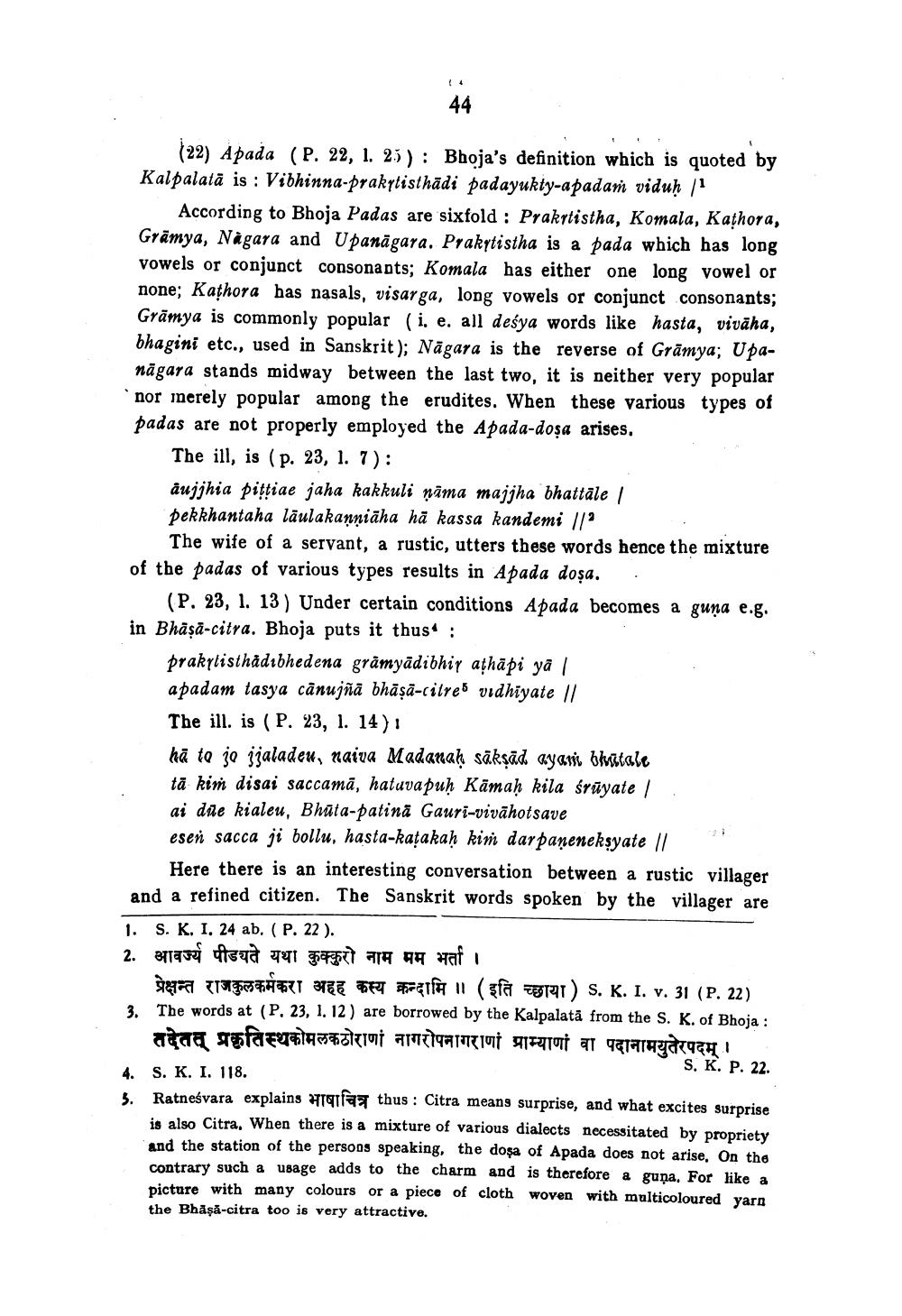________________ 44 (22) Apada (P. 22, 1. 25): Bhoja's definition which is quoted by Kalpalata is : Vibhinna-prakytisthadi padayukty-apadam viduh / 1 According to Bhoja Padas are sixfold : Prakrtistha, Komala, Kathora, Gramya, Nagara and Upanagara. Prakytistha is a pada which has long vowels or conjunct consonants; Komala has either one long vowel or none; Kathora has nasals, visarga, long vowels or conjunct consonants; Gramya is commonly popular (i. e. all desya words like hasta, vivaha, bhagini etc., used in Sanskrit); Nagara is the reverse of Gramya; Upanagara stands midway between the last two, it is neither very popular nor merely popular among the erudites. When these various types of padas are not properly employed the Apada-dosa arises, The ill, is (p. 23, 1. 7): aujjhia pittiae jaha kakkuli nama majjha bhattale / pekkhantaha laulakanniaha ha kassa kandemi 1/? The wife of a servant, a rustic, utters these words hence the mixture of the padas of various types results in Apada dosa. (P. 23, 1. 13) Under certain conditions Apada becomes a guna e.g. in Bhasa-citra. Bhoja puts it thus : prakylisthadibhedena gramyadibhir athapi ya / apadam tasya canujna bhasa-cilreb vidhiyate // The ill. is (P. 23, 1. 14): ha to je jjaladeu, naiva Madarak saksad syari blutale ta kim disai saccama, hatuvapuh Kamah kila sruyate ai dae kialeu, Bhuta-patina Gauri-vivahotsave esen sacca ji bollu, hasta-katakah kim dar paneneksyate 11 Here there is an interesting conversation between a rustic villager and a refined citizen. The Sanskrit words spoken by the villager are 1. S. K. I. 24 ab. (P. 22). 2. Bftarar Heta 71 3:45 ATA Haf ggna ERT BET FORT FRIA 1 ( sfa 1 S. K. I. v. 31 (P. 22) 3. The words at (P. 23, 1. 12) are borrowed by the Kalpalata from the S. K. of Bhoja : तदेतत् प्रकृतिस्थकोमलकठोराणां नागरोपनागराणां प्राम्याणां वा पदानामयुतेरपदम् / / S. K. P. 22. 4. S. K. I. 118. 3. Ratnesvara explains Hatay thus : Citra means surprise, and what excites surprise is also Citra. When there is a mixture of various dialects necessitated by propriety and the station of the persons speaking, the dosa of Apada does not arise. On the contrary such a usage adds to the charm and is therefore a guna, For like a picture with many colours or a piece of cloth woven with multicoloured yarn the Bhasa-citra too is very attractive.




